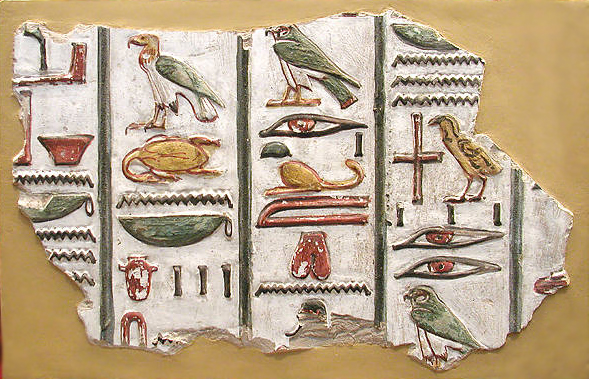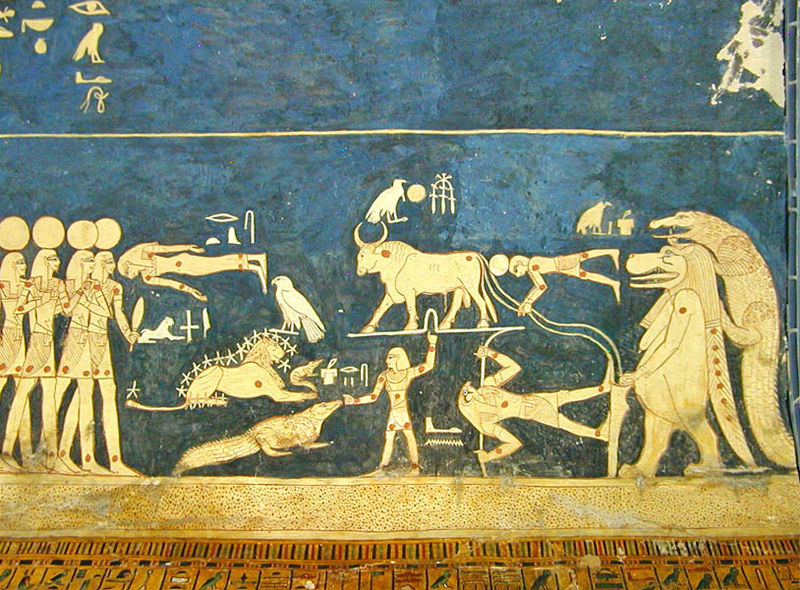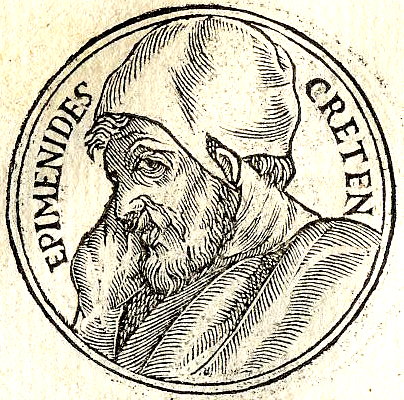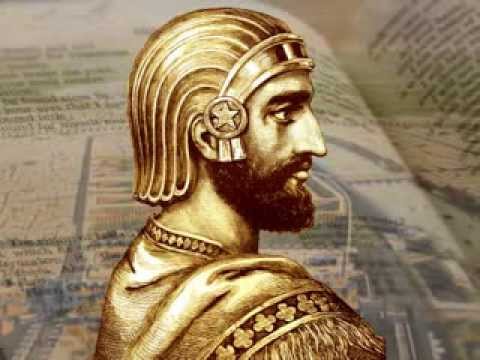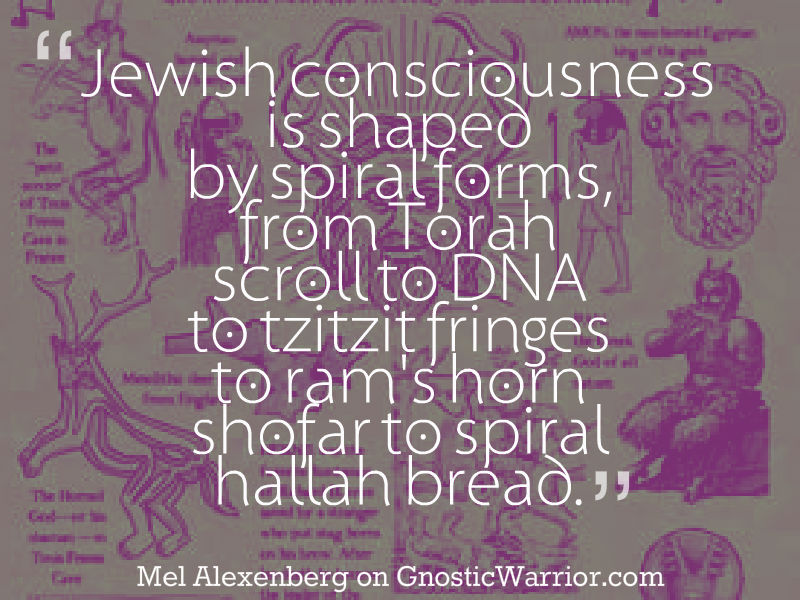The New Testament genealogy traces the ancestry of people such as Noah, Abraham, Moses, Enoch 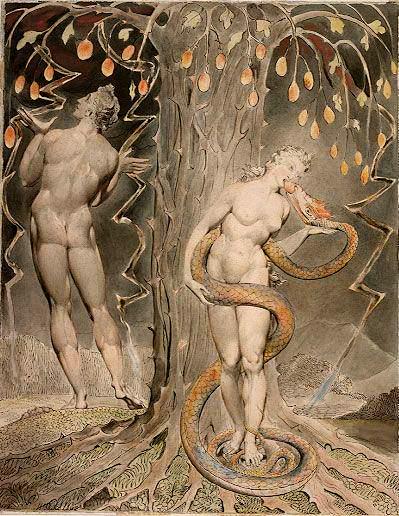 and Jesus, to Seth. Seth is named in the opening genealogy of Chronicles, 1 Chron. i. 1, and in Luke’s genealogy of Christ. Greek Christian historian, Sextus Julius Africanus had said that all the righteous men and patriarchs down to the Saviour himself have sprung from Seth and have been denominated as the sons of God in contradistinction to the sons of man.
and Jesus, to Seth. Seth is named in the opening genealogy of Chronicles, 1 Chron. i. 1, and in Luke’s genealogy of Christ. Greek Christian historian, Sextus Julius Africanus had said that all the righteous men and patriarchs down to the Saviour himself have sprung from Seth and have been denominated as the sons of God in contradistinction to the sons of man.
These ancient Gnostic teachings of the Sethians would later help form the Christian religion as we know it today. For example, just like modern Christianity, the Sethians also believed Jesus to have been born of a virgin, and to be the Christ. The descendants of Seth had called themselves the Sons and Children of God, their God, and that they alone had the true Gnosis of the Divine. They were priests, scribes, and some of the first Gnostics who wrote down their teachings first in the Book of the Dead, and later in their history and law books we know of today as the Old and New Testaments.
 This Seth I believe to be no other than the ancient Egyptian Pharaoh Seti or Suti who was the forefather of the 19th dynasty. This is when the Egyptians and Hittites had become the mixed races of the Egypto-Hittites of Israel and they became what a Hittite scribe said, “one heart and soul.” I had previously written about this official union of the races of the Egyptians and Hittites in my articles, the Egyptian and Hittite Brotherhood of Israel. Seth’s descendants who were the Egypto-Hittites of Israel would go on to form one of the most powerful dynasties (19th) that Egypt has ever seen, with both Ramesses II and III being some of the last great Pharaohs of this era.
This Seth I believe to be no other than the ancient Egyptian Pharaoh Seti or Suti who was the forefather of the 19th dynasty. This is when the Egyptians and Hittites had become the mixed races of the Egypto-Hittites of Israel and they became what a Hittite scribe said, “one heart and soul.” I had previously written about this official union of the races of the Egyptians and Hittites in my articles, the Egyptian and Hittite Brotherhood of Israel. Seth’s descendants who were the Egypto-Hittites of Israel would go on to form one of the most powerful dynasties (19th) that Egypt has ever seen, with both Ramesses II and III being some of the last great Pharaohs of this era.
Seth, (AKA) Seti or Suti I, was said to be from a military family in the Delta and a prominent general during the late 18th dynasty (14th century BCE) under Pharaoh Amenhotep IV who was placed in charge with the oversight of the Delta, and is later mentioned as vizier on monuments of his son, Pharaoh Ramesses I who reigned for a very short time (1318–1317) but gave his name to one of the most illustrious families in history, the Ramessides. He was followed by Seti I (1317–1301).
According to many Greek historians such as Diodorus Siculus (who calls Seth by the name of Sesoösis) and Strabo, he conquered the whole world, and was at the head of a large army that invaded Libya, Arabia, Asia, Europe, Thrace, and even Scythia and Ethiopia. Placing a fleet on the Red Sea, conquered the adjacent isles, and extended his power to India itself.
He brought back with him large numbers of slaves who were employed on public works, the building of temples, and the construction of canals and mounds. Memorials of his reign were left as steles or tablets in the conquered countries; Herodotus saw some in Palestine. The famous Kings of Thrace (Odrysian Kingdom) were called Seuthes and the capital to Seuthopolis after Pharaoh Seth (Set I; Sethos). Also in ancient Bithynia there was a city of Sethia, and others of the same name elsewhere.
Seth divided Egypt into administrative districts or nomes, was a great law-giver, and introduced a caste system into Egypt and the worship of Serapis (The Serpent). Now we know when and how the worship of the serpent became a global phenomenon.
According to Herodotus, Seth (Sesostris) was succeeded by Pheron, and Pheron by Proteus, in whose reign Troy was taken; and according to Manetho, Seth was succeeded by Ramesses, and Pliny says in the reign of Ramesses, Troy was taken. Herodotus also relates that when Seth (Sesostris) defeated an army without much resistance he erected a pillar in their capital with a vagina on it to symbolize the fact that the army fought like women. This pillar would be the same one of which, says Josephus, survived in his time.
Seth was the legendary king of ancient Egypt who led a military expedition into parts of Europe, as related by Herodotus. The naval prowess of Seth is expressly referred to by Manetho, whose statements are here quite confirmed by the monuments, which speak of his being master of the Mediterranean. According to Diodorus Siculus (who calls him Sesoösis) and Strabo, he conquered the whole world, even Scythia and Ethiopia, divided Egypt into administrative districts or nomes, was a great law-giver, and introduced a caste system into Egypt and the worship of Serapis (The Serpent).
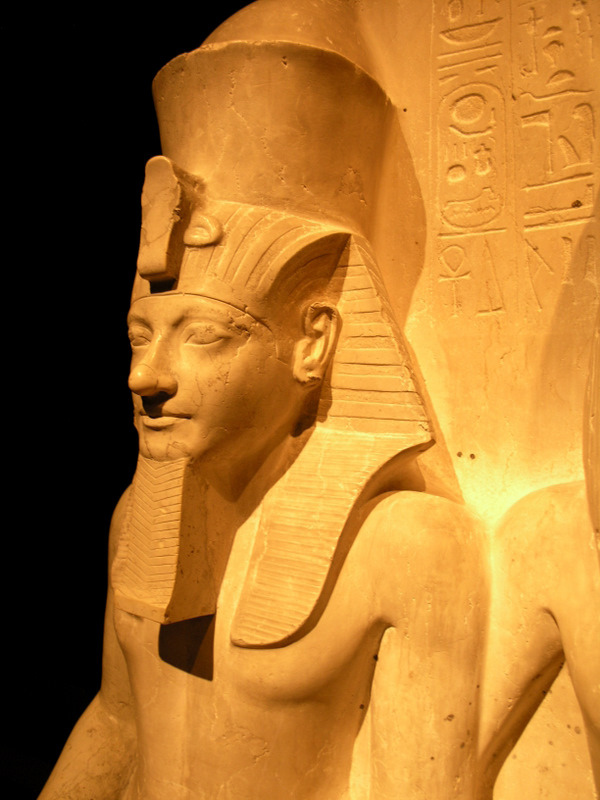 Manetho also states that Seth (Greek Sethos) was called Egyptos, and his brother Pharaoh Horemheb/Harmais was called Danaos (Dan). Horemheb; who we can also call King Dan I, was the last Pharaoh of the 18th Dynasty, from either 1319 BC to late 1292 BC, or 1306 to late 1292 BC (if he ruled for 14 years). The two of the attested Greek names for the Egyptian name of Horemheb are Αρμαις (H/Arma-is or Harmais) and Αρμαιος (H/Armai-os or Hormose). I have found that the names of, Harmais or Hormose to be very similar to Moses and it was Moses who led his peoples in the exodus from Egypt that is well attested for in the bible.
Manetho also states that Seth (Greek Sethos) was called Egyptos, and his brother Pharaoh Horemheb/Harmais was called Danaos (Dan). Horemheb; who we can also call King Dan I, was the last Pharaoh of the 18th Dynasty, from either 1319 BC to late 1292 BC, or 1306 to late 1292 BC (if he ruled for 14 years). The two of the attested Greek names for the Egyptian name of Horemheb are Αρμαις (H/Arma-is or Harmais) and Αρμαιος (H/Armai-os or Hormose). I have found that the names of, Harmais or Hormose to be very similar to Moses and it was Moses who led his peoples in the exodus from Egypt that is well attested for in the bible.
It is well-known that the ancient Ethiopians and Scythians had worshiped the serpent. Now we know when and how the worship of the serpent became a global phenomenon that is attested by two great historians and also the archaeological evidence that has been found all over the world. It was through the work of the Sons of Seth (Sethians, Ophites, Levites, etc.) who descend from Pharaoh Seth that introduced a caste system into Egypt and the worship of Serapis (The Serpent) into the West in lands such as Crete, Greece, Italy, all of Europe and the Americas.
These stories above also coincide with the Greek myths of the Kings of the Danaoi, or Danaans who 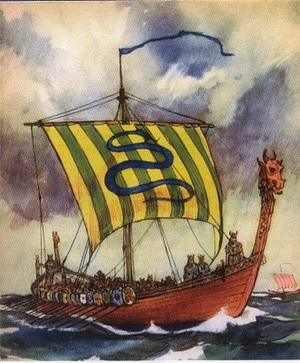 had all claimed descent from King Danus; who also had led a migration from Egypt (Israel) to Greece. You will also find them under other spellings such as the Danaoi (Danaoi used 138 times in the Iliad), Danaus, Danae,Danaans, Danoi, Danaids,or Dananites.
had all claimed descent from King Danus; who also had led a migration from Egypt (Israel) to Greece. You will also find them under other spellings such as the Danaoi (Danaoi used 138 times in the Iliad), Danaus, Danae,Danaans, Danoi, Danaids,or Dananites.
In the story passed down by these historians; Seth, having during his own war-expeditions to foreign lands placed his brother Pharaoh Horemheb or Harmais (Danaus) as regent, or viceroy in Egypt. While Seth was on expedition, his brother Dan had conspired to destroy Seth and all his family in order to take the throne. Upon Seth learning of the plot and on his return to Egypt, he then expelled his brother Harmais (Danaus) from Egyptian lands. Dan then led an exodus out of Egypt to Argos and founded there the legendary Danaid Dynasty, or more commonly known as the Tribe of Dan which succeeded that of Inachos.
The Greek Danaoi, or Danaans, which had at onetime possessed colonies in the Black Sea region around the mouths of the rivers Danube, Don, and Dnieper; The chiefs/kings of the Greek Danaoi or Danaans, who had claimed descent from the ancient Greek King Danaus (Horemheb/Harmais, Tanaus or Dan I), or in Homer’s Iliad as the “Danaans” or “tribe of Danaë,” grandchildren of Belus (Phoenician ‘Baal’) who gave their name to the “Argives.”
The beginning of Greek history is often dated to this “exile” from Egypt of the Danaoi, who appear in classical writings as the “Danaans.” You will also find them under other spellings such as the Danaoi (Danaoi used 138 times in the Iliad), Danaus, Danae, Danaans, Danoi, Danaids,or Dananites. It was said by these families; “which remain to be considered no new race of people was introduced. Danaus and his descendants were engrafted on the Pelasgi; Cadmus and the Labdacidai on the Aborigines of Boetia. Pelops and the Pelopidce were incorporated with the iEolians and Achaeans; Hercules and his posterity were adopted by the Dorians. The Arcadian kings belonged to the original Pelasgic stock.”
This is also the same exact time when the followers of Seth, the Sethians who we now know are the ancient Egypto-Hittites, would father many nations such as the Phoenicians (Cretans, Sidonians, Minoans, etc.), Romans, and in the story of the Gnostics, who I like to call the Roman Gnostic Sethians (Kittim, Chittim or Cethim); had colonized various lands and islands such Crete, Rhodes, Cyprus, Greece, Sicily, Italy and many other nations of Europe. I write in detail about the Sethians in the section the “The Gnostic Sethians“, where I explain that these are the Gnostics who helped form the Roman Empire, and Catholic Church.
In the Scripture under Numbers, we find that Seth is also identified with the Bedouin. Let us not forget the story of the Bedouin Prince Abraham, who held the Bedouin court in Egypt; or that of the Biblical Joseph, who was once sold into slavery by his own brothers as the Bedouin slave, to then later again become a Bedouin Prince who had adorned the coat of many colors and then became judge of his peoples.
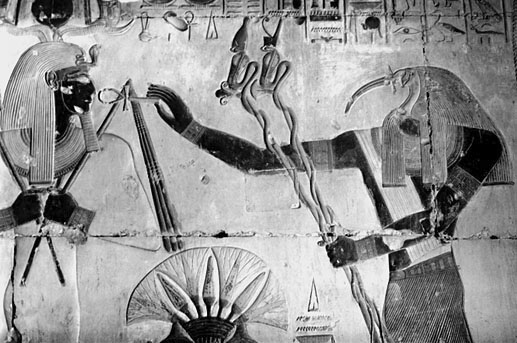 The meaning of the name Seth identifies their roles as the scribes and historians for this Roman Gnostic branch and religion; Seth or Seh for Teth, or Thoth. Names that mean “scribe or true scribe,” and also water. The image to the left is of Seth and Thoth from his tomb, Seth (from which Seh) water, from the water. Seth means also the sun, while being the word from which our “Sea.” But for another meaning of the name you have Ma, true, and Seth or Seh for Teth, scribe, thus “true scribe.” Thoth, Mercury or Hermes, was the Scribe of the Gods. In a passage of the “Book of the Dead,” we read “Tet otherwise Set.”
The meaning of the name Seth identifies their roles as the scribes and historians for this Roman Gnostic branch and religion; Seth or Seh for Teth, or Thoth. Names that mean “scribe or true scribe,” and also water. The image to the left is of Seth and Thoth from his tomb, Seth (from which Seh) water, from the water. Seth means also the sun, while being the word from which our “Sea.” But for another meaning of the name you have Ma, true, and Seth or Seh for Teth, scribe, thus “true scribe.” Thoth, Mercury or Hermes, was the Scribe of the Gods. In a passage of the “Book of the Dead,” we read “Tet otherwise Set.”
The legend of the Phoenix was first told in the City of the Sun or in Greek, Heliopolis where the first written records were given to us by Herodotus in his work titled Euterpe. He had written how the Phoenix was first seen in Heliopolis during the reign of Pharaoh Seth (Seti, Suthy or Sesostris) and then in the reign of Amasis shortly after the days of Ptolemy. Pharaoh Seth plays a prominent role as the main hero in the Book of the Dead. The most important temple in the City of the Sun at this time was the “Mansion of the Phoenix” or “Mansion of the Benben.” It has also been called the temple of the sun. In Utterance 600 of the Pyramid Texts speaks of Atum as you rose up, as the benben, in the Mansion of the Benu in Heliopolis (Hart, p.16).
Their name of the Sethians or Sons of Seth as I mentioned above is derived from being the ancestors of Egyptian Pharaoh Seti or Suthi, who in Greek was called Sethos (Seth). The father of the races known today as the original Phoenicians, New Kingdom Egyptians (19th onward), the first Greeks, Scythians, Romans, Celts and Israelites can all trace their ancestry to the Egyptian Pharaoh Seth, making them all cousins.
Here is an image of the Hieroglyphs from the tomb of Seti I at Thebes. One of his main symbols is the eight pointed cross like that of the Roman Iron Cross and Templar Cross Patte in which his Roman descendants would honor to this very day.
Here is another Hieroglyph image showing the Lion of Judah and eight pointed cross from the Tomb of Seth I.
THE SECRET GNOSTIC TEACHINGS OF SETH AND THE SETHIANS
It is said that Adam gave Seth secret teachings that would become the kabbalah. The Zohar refers to Seth as “ancestor of all the generations of the tzaddikim” (Hebrew:righteous ones).
Author Jean Doresse had written in The Secret Books of the Egyptian Gnostics; “Seth is known in Islam, and usually assimilated to Agathodaimon, who is one of the great figures of Hermetic literature. The prophetic prestige with which the Gnostics endowed him, he still possesses, especially in the traditions of various Shi’ite groups, therefore chiefly in Mesopotamia or in Iran. In these particular doctrines the survival of Gnostic themes is ubiquitous and seems immense…”
The Sabazians (Sabines) claim that Seth is their first teacher; and have Books ascribed to Seth. Manly P. Hall had said that the “Sabazian Mysteries were performed at night, and the ritual included the drawing of a live snake across the breast of the candidate.” The Masons honor Seth in lecture of the Second or Fellow Craft’s Degree, it is said, “In six days God created the heavens and the earth, and rested upon the seventh day; the seventh, therefore, our ancient Brethren consecrated as a day of rest from their labors, thereby enjoying frequent opportunities to contemplate the glorious works of creation, and to adore their great Creator.”
The hand of the mysteries also represent the Scorpion Rite, The rites of the Scorpion are the Mysteries of the Apocalypse and the ceremonials of the Sabazians.

Moe is the founder of GnosticWarrior.com. He is a father, husband, author, martial arts black belt, and an expert in Gnosticism, the occult, and esotericism.

